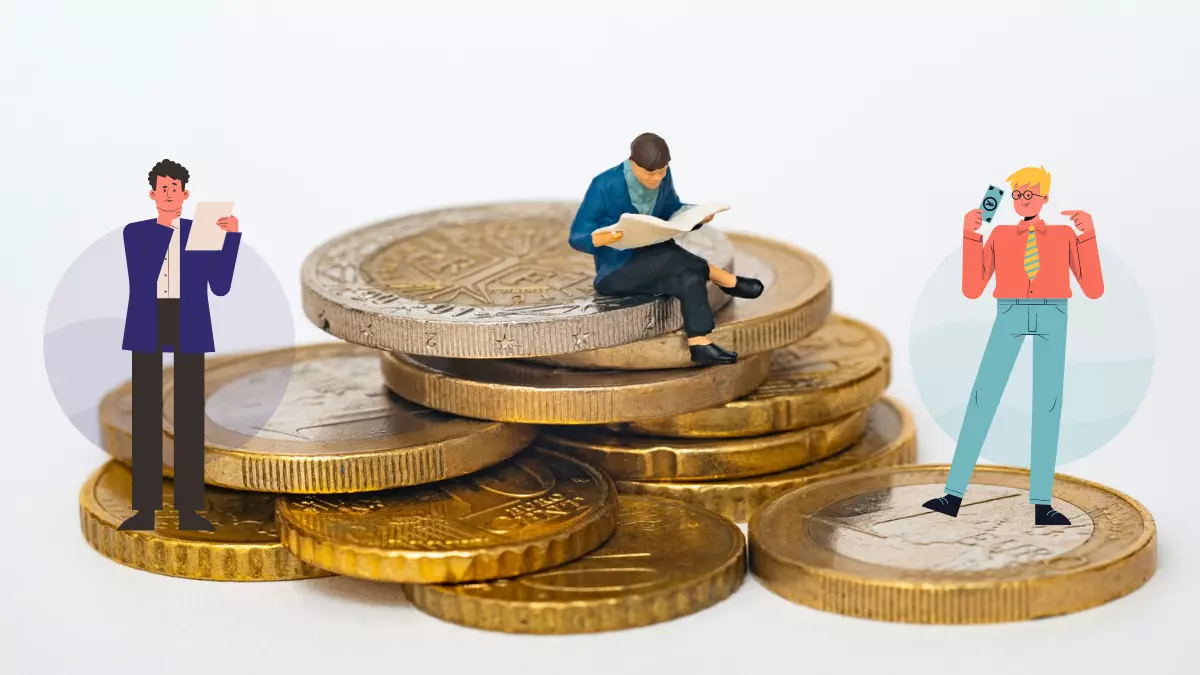About three years ago, I was an active yoga student. I went 4 days per week, every week, for 4+ years.
I loved everything about yoga, and I had started a little website to bring the Atlanta yoga community together. An owner of a local yoga clothing store caught wind of my site, and wanted to connect.
Her store was fabulous, full of the tip-top-of-the-line yoga clothes (prettier and pricier than lululemon–for those in the know), and I was smitten. She hosted free Saturday yoga classes for the community, and, wanting to connect with the community, I went.
After a few Saturday yoga classes in the fancy-dancy store, I realized that I didn’t look like I belonged there. My “nicest” yoga pants were from Target, I wore 5-year-old cotton tank tops, and I hadn’t previously cared too much about my “yoga look.”
But surrounded by gorgeous clothes, pretty people, and helpful stylists, I suddenly felt like I “deserved” all of these nice things that I had never needed or wanted before. I should LOOK like a yoga person, right?
So I let myself look at the clothes. I then found myself wanting to try on some of the clothes. Soon everyone was telling me how GOOD I looked in those yoga clothes.
Then the internal dialogue started–hadn’t my friend been so kind in offering me community-building advice and free yoga classes? And shouldn’t I support local businesses?
Before I could stop myself, I was at the register with a $400 yoga outfit–a ridiculous sum, considering my $2100/month paycheck at the time.
Even when I knew this was an awful financial decision–I was hooked and unable to back out. The experience had activated my spending triggers, and I felt helpless in stopping the flow of money out of my bank account.
Turning this back to the bigger discussion on overspending…
In my last post, I talked about the top 3 reasons people overspend, which included a lack of money consciousness, filling an emotional void, or trying to keep up with the Joneses. However, simply knowing the roots of the overspending problem (i.e. the internal source) is just the start. You then have to identify the situations, people, marketing messages, and external factors that make you spend beyond your means–and put up blocks between you and the trigger.
Had I just said to myself, “Guy, you’re trying to keep up with the Joneses!” I’d probably just proceeded to keep spending. What does it matter, when you’re already standing at the register?
What would have definitely worked better was if I solved the problem before it ever started.
In peeking behind the curtain of that experience,
My External Spending Triggers Were These:
- I tried on beautiful items that were drastically more than I would ever want to pay.
- I was in the company of people who had more disposable income to spend on yoga clothes.
- I was high on post-workout endorphins and feeling like I could manage to do (and afford) anything.
- I took advantage of free advice and yoga classes, which made me feel indebted to the store owner.
With those spending triggers in mind, I started putting up barriers between myself and the spending trigger. For example:
- I don’t go to high-end shops. Ever. I can’t spend $400 on a shirt I simply don’t go to places that have $400 shirts.
- I don’t go shopping with people who significantly out-earn me, or who significantly out-spend me. Then, I’m not tempted to “keep up”
- I don’t go shopping after working out. I feel limitless after working out, and I can spend limitlessly too.
- I accept free offers as gracious gifts–nothing more, nothing less.
Now, to be clear, there are hundreds of other spending triggers. People tend to overspend in a lot of situations, such as when you…
- …feel overworked and want to make yourself feel properly valued
- …find a “limited time offer” deal or sale, and cave to FOMO (the fear of missing out)
- …shop with a credit card rather than the cash you actually have
- …are on vacation and letting loose
- …are bored and want to fill time
- …entertain guests, splurging on extras that you don’t normally buy
- …go shopping/out to eat/out for drinks with that certain friend
- …reach a certain goal and want to reward yourself
- …take advantage of “sales” that are ultimately designed to make you spend more
- …and a HOST of other things.
So start thinking now about situations where you’ve overspent. First, identify the internal factors that made you spend, Then, look at all the little situations, people, and marketing messages that led you to overspend. Once you’ve put your finger on those things that make you spend more, own up to them, and start putting up blocks to prevent it from happening again.
Also Read:
- Will I Ever Stop Feeling Guilty About Spending Money?
- Peek Inside My Financial Life
- The First Step to Fearless Investing
- How to Make Financial Changes – Ultimate Guide
If you liked this blog post, there’s more where it came from! Identify and block your spending triggers.
